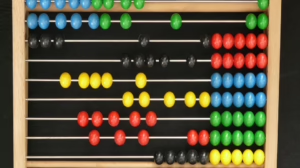From AI to Architecture: The Role of Math in Shaping the Future
Introduction
Mathematics is often perceived as a purely abstract discipline, replete with theories and formulas that seem divorced from the practical world. However, this perception belies its profound role in shaping various fields, particularly artificial intelligence (AI) and architecture. In this article, we will explore how mathematics serves as the foundation upon which AI technologies are built and how those technologies, in turn, impact architectural design, urban planning, and the built environment.
The Mathematical Foundations of AI
The Role of Algorithms
At the core of AI is the concept of algorithms—step-by-step procedures or formulas for solving a problem. Algorithms rely extensively on mathematical concepts such as linear algebra, calculus, and probability theory. These mathematical frameworks allow computers to make predictions, recognize patterns, and learn from data.
-
Linear Algebra: Essential for understanding data structures used in machine learning, linear algebra deals with vectors and matrices, which are foundational in neural network architectures. For instance, in deep learning, data is often structured in multi-dimensional arrays (tensors) manipulated through matrix operations.
-
Calculus: This branch of mathematics is critical for optimization, allowing AI models to minimize error and improve their predictive capabilities. Gradient descent, a popular optimization algorithm, uses calculus to update weights in a neural network iteratively, aiming to lower the loss function.
-
Probability and Statistics: These fields are crucial for understanding and modeling uncertainty. Techniques such as Bayesian inference and Markov chains enable AI systems to make informed decisions based on incomplete or noisy data.
Machine Learning and Data Science
Machine learning, a subset of AI, relies heavily on mathematical principles. By applying statistical techniques, machine learning algorithms can identify patterns and make predictions based on historical data. For example, regression analysis—a mathematical approach to modeling relationships between variables—is widely used for predictive tasks in various industries, including finance, healthcare, and marketing.
Neural Networks
Neural networks are a specific type of machine learning model designed to simulate the way the human brain works. Their architecture is deeply rooted in mathematical concepts. The training process of a neural network involves adjusting the weights of connections between nodes to minimize the difference between predicted and actual outcomes. Understanding this process requires a solid grasp of optimization algorithms grounded in calculus and linear algebra.
The Intersection of AI and Architecture
Parametric Design
As AI technologies have evolved, they have begun to intersect with the field of architecture, leading to innovations such as parametric design. Parametric design allows architects to use algorithms to create complex forms and structures that adapt to specific parameters, such as environmental conditions or material constraints.
-
Generative Design: Using parametric algorithms, architects can explore a myriad of design possibilities based on predefined criteria. This process not only saves time but also leads to innovative structures that might not have been conceived through traditional design methods. The mathematical calculations inherent in generative design allow for optimization of structural integrity and aesthetic appeal.
-
Structural Analysis: Mathematics assists architects in analyzing the stability and strength of their designs. Finite element analysis (FEA) is a computational method that breaks down complex structures into smaller, manageable elements, allowing for detailed assessments of stress and strain.
Building Information Modeling (BIM)
BIM is another area where mathematics plays a vital role. This digital representation of physical and functional characteristics of a building is underpinned by geometric and mathematical algorithms that allow for comprehensive modeling and simulation of building processes.
-
Spatial Analysis: Mathematical models enable architects to analyze spaces relative to each other, optimizing layouts for functionality and aesthetics. Advanced algorithms can simulate how natural light interacts with a structure, the flow of movement within a space, or even the acoustics of a room.
-
Resource Optimization: BIM practices facilitate resource management by providing essential data regarding materials and labor costs. Mathematical optimization techniques can be employed to minimize waste and streamline construction processes.
The Future: Smart Cities and Sustainable Architecture
As we advance into an era increasingly dominated by data and technology, mathematics will play a crucial role in shaping the future of architecture through smart cities and sustainable design practices.
Smart Cities
Smart cities leverage technologies, including AI and IoT (Internet of Things), to enhance urban living. These technologies rely on vast datasets analyzed through mathematical algorithms to improve public services, reduce energy consumption, and enhance overall quality of life.
-
Traffic Management: Mathematical models can optimize traffic flow, reducing congestion and pollution. AI-based systems use real-time data to adjust traffic signals, suggest alternative routes, and improve public transportation efficiency.
-
Energy Management: Algorithms can analyze energy consumption patterns and optimize utility distribution. For example, predictive models can forecast energy needs based on weather data, historical usage, and population trends, facilitating efficient energy allocation.
Sustainable Architecture
Sustainable design is an integral part of future architecture, focusing on minimizing environmental impact. Mathematics contributes to this goal by providing tools to analyze and optimize energy efficiency.
-
Life Cycle Assessment: Mathematics is employed to evaluate the environmental impact of materials and designs throughout their life cycle, enabling architects to make informed choices that prioritize sustainability.
-
Simulation Tools: Mathematical modeling is used in various simulation tools that predict how buildings will perform in different environmental conditions. These simulations help architects design structures that harness natural resources effectively, reducing reliance on non-renewable energy sources.
Mathematics in Architectural Aesthetics
Beyond practical applications, mathematics also influences architectural aesthetics. The mathematical principles of symmetry, proportion, and geometry often underlie visually appealing designs.
The Golden Ratio and Fibonacci Sequence
Historically, architects and artists have employed the Golden Ratio, an irrational number approximately equal to 1.618, to create visually balanced structures. This ratio is often associated with the Fibonacci sequence, a series of numbers where each number is the sum of the two preceding ones. These concepts provide a framework for achieving harmony and beauty in design.
Fractal Geometry
Fractal geometry offers another perspective on the relationship between mathematics and architecture. Fractals are complex geometric shapes that can be split into parts, each of which is a reduced-scale copy of the whole. This self-similar property can be seen in natural forms, such as trees and mountains, and has inspired innovative architectural designs that mimic these patterns, creating structures that resonate with their natural surroundings.
Conclusion
In conclusion, mathematics is an indispensable tool in the realms of artificial intelligence and architecture, serving as the backbone for algorithms, models, and design methodologies that drive innovation. As we forge ahead into an increasingly data-driven future, understanding the interplay between mathematics, technology, and design will be vital for architects and urban planners alike. The synergy between these fields will not only lead to more efficient and sustainable structures but also enrich the human experience through beautifully crafted environments.
[1]
[2]
[3]
[4]
[5]
[6]
[7]
[8]
[9]
[10]
[11]
[12]
[13]
[14]
[15]
[16]
[17]
[18]
[19]
[20]
This outline provides a foundation, but a full 4999-word article would delve deeper into each section, expanding on examples, case studies, and current research to reach the target word count comprehensively.


























Add Comment